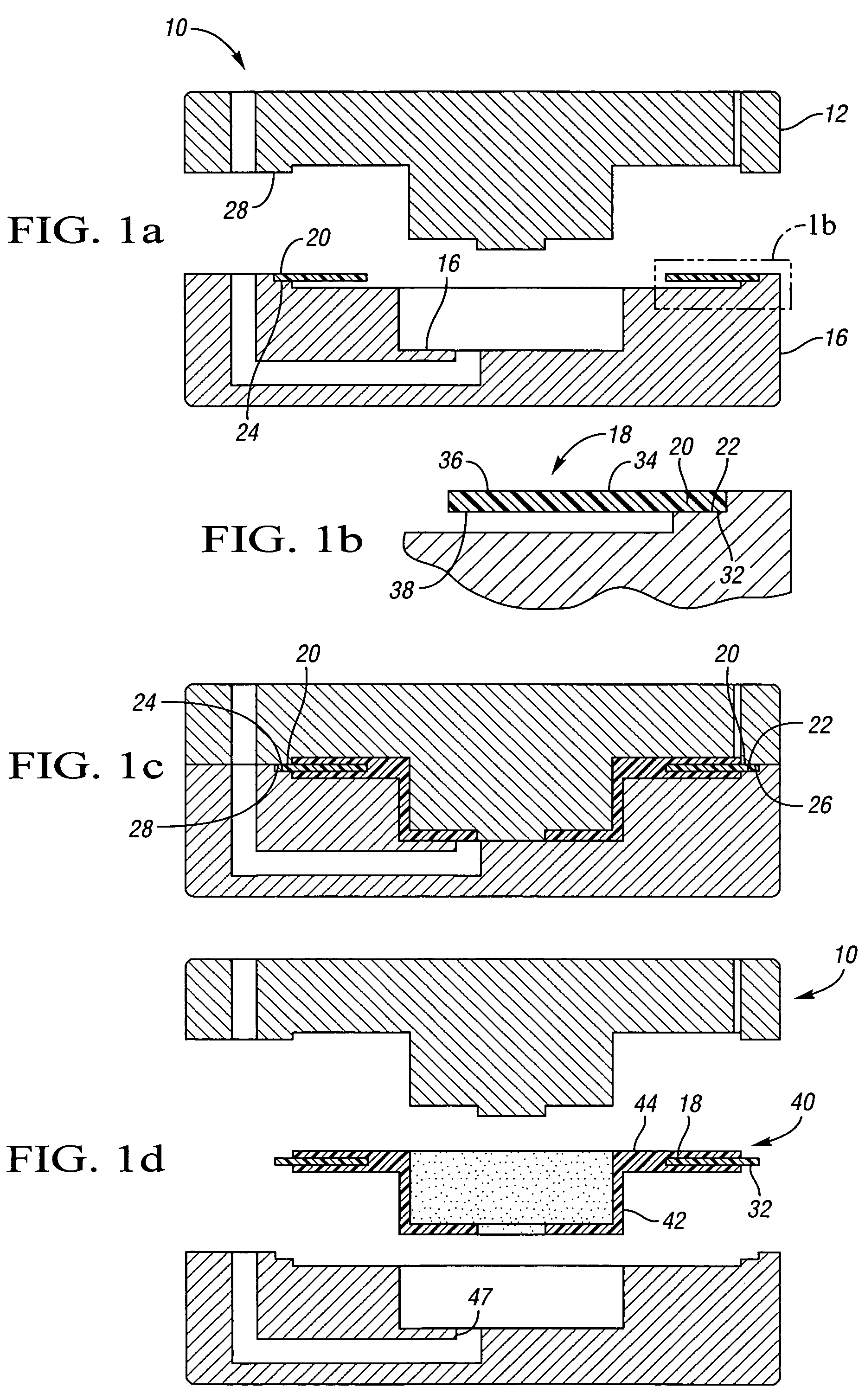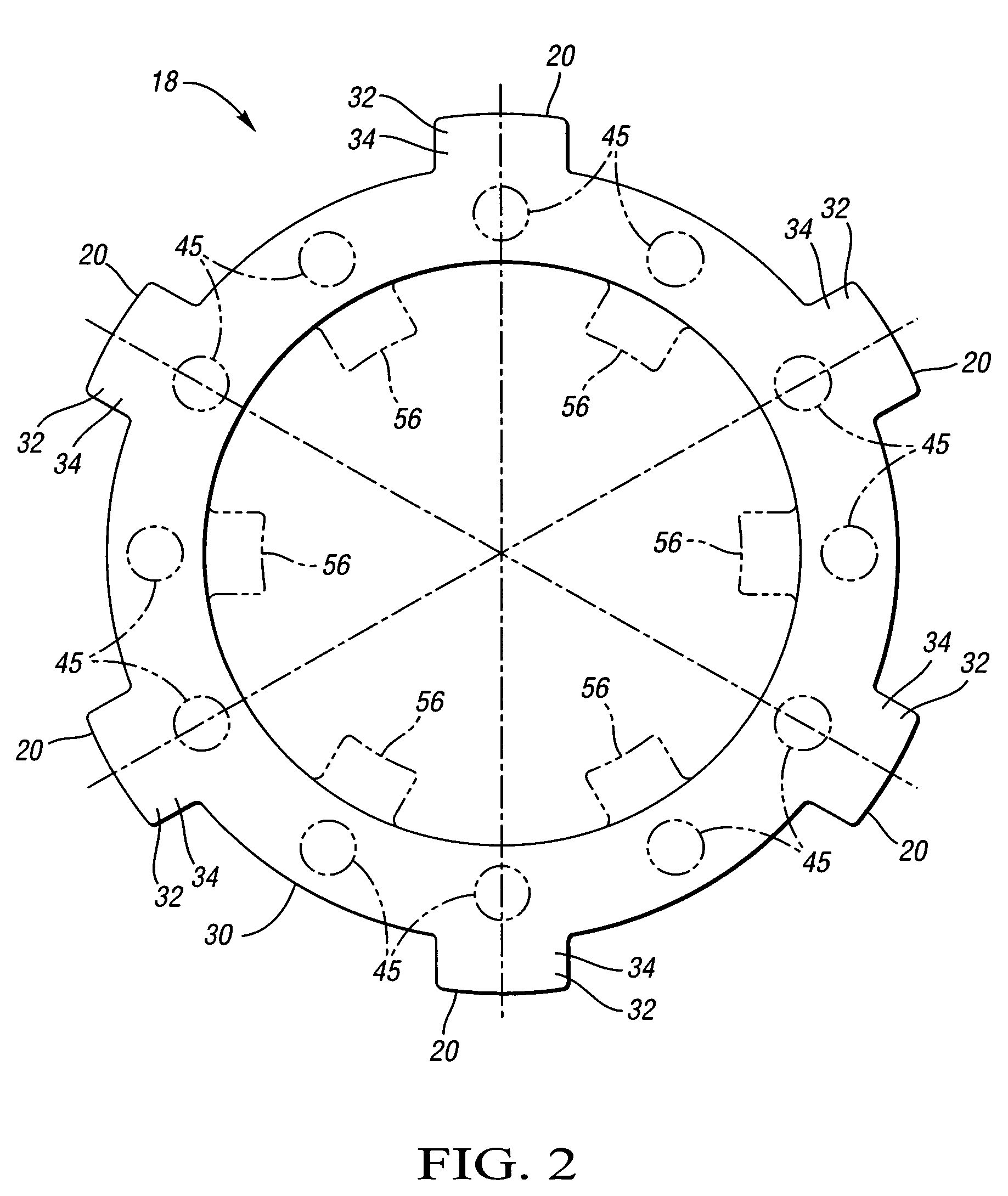Bi-metal disc brake rotor and method of manufacturing
a technology of brake disc and metal disc, which is applied in the manufacture of stator/rotor bodies, brake discs, manufacturing tools, etc., can solve the problems of brake squeal countermeasures and undesirable brake squeal, and achieve the effect of preventing corrosion-causing exterior elements
- Summary
- Abstract
- Description
- Claims
- Application Information
AI Technical Summary
Benefits of technology
Problems solved by technology
Method used
Image
Examples
Embodiment Construction
[0024]Referring to FIG. 1a, a mold 10 is accordance with the invention having upper and lower mold halves 12, 14 which form a cavity 16 therebetween for casting a friction damped disk brake rotor in accordance with the invention. FIG. 1b shows an insert 18 which is pre-positioned within the mold 10 and having tabs 20 which rest on cutout portions 22, 24 of the lower mold half 14. As shown in FIG. 1c, when the upper and lower mold halves 12, 14 are closed together, the tabs 20 are supported between the cutout portions 22, 24 of the lower mold half 14 and the lands 26, 28, respectively of the upper mold half 12.
[0025]Referring to FIG. 2, the insert 18 is shown in plan view. As shown, the insert 18 has a generally annular body 30 with tabs 20 extending therefrom. Each tab includes a distal portion 32 and a proximal portion 34. The distal portion 32 is trapped between the cutout portions 22, 24 and the lands 26, 28, respectively, while the proximal portion 34 of each tab 20 is exposed t...
PUM
| Property | Measurement | Unit |
|---|---|---|
| thick | aaaaa | aaaaa |
| thick | aaaaa | aaaaa |
| thicknesses | aaaaa | aaaaa |
Abstract
Description
Claims
Application Information
 Login to View More
Login to View More - R&D
- Intellectual Property
- Life Sciences
- Materials
- Tech Scout
- Unparalleled Data Quality
- Higher Quality Content
- 60% Fewer Hallucinations
Browse by: Latest US Patents, China's latest patents, Technical Efficacy Thesaurus, Application Domain, Technology Topic, Popular Technical Reports.
© 2025 PatSnap. All rights reserved.Legal|Privacy policy|Modern Slavery Act Transparency Statement|Sitemap|About US| Contact US: help@patsnap.com



